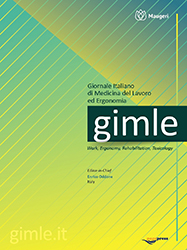Analysis of reaching movements of upper arm in robot assisted exercises
Kinematic assessment of robot assisted upper arm reaching single-joint movements
All claims expressed in this article are solely those of the authors and do not necessarily represent those of their affiliated organizations, or those of the publisher, the editors and the reviewers. Any product that may be evaluated in this article or claim that may be made by its manufacturer is not guaranteed or endorsed by the publisher.
Authors
Robot-mediated therapy (RMT) has been a very dynamic area of research in recent years. Robotics devices are in fact capable to quantify the performances of a rehabilitation task in treatments of several disorders of the arm and the shoulder of various central and peripheral etiology. Different systems for robot-aided neuro-rehabilitation are available for upper limb rehabilitation but the biomechanical parameters proposed until today, to evaluate the quality of the movement, are related to the specific robot used and to the type of exercise performed. Besides, none study indicated a standardized quantitative evaluation of robot assisted upper arm reaching movements, so the RMT is still far to be considered a standardised tool.
In this paper a quantitative kinematic assessment of robot assisted upper arm reaching movements, considering also the effect of gravity on the quality of the movements, is proposed. We studied a group of 10 healthy subjects and results indicate that our advised protocol can be useful for characterising normal pattern in reaching movements.
How to Cite

This work is licensed under a Creative Commons Attribution-NonCommercial 4.0 International License.
PAGEPress has chosen to apply the Creative Commons Attribution NonCommercial 4.0 International License (CC BY-NC 4.0) to all manuscripts to be published.






